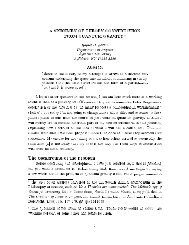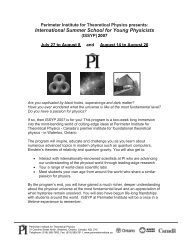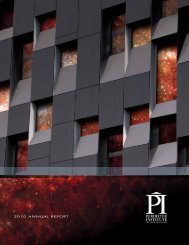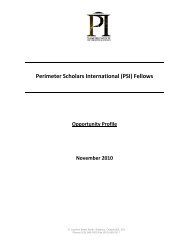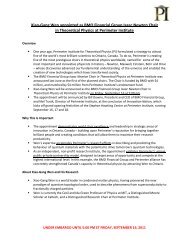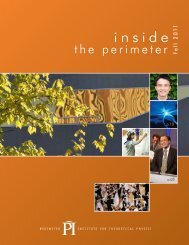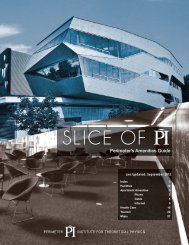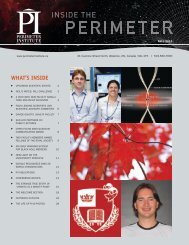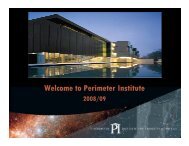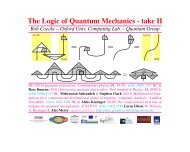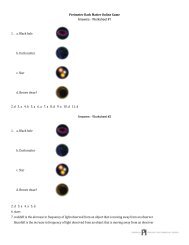Quantum Error Correction / CO639 - Perimeter Institute
Quantum Error Correction / CO639 - Perimeter Institute
Quantum Error Correction / CO639 - Perimeter Institute
You also want an ePaper? Increase the reach of your titles
YUMPU automatically turns print PDFs into web optimized ePapers that Google loves.
For a non-degenerate code<br />
N E errors occur; each gives a 2 k − dim subspace of a 2 n − dim total space (n qubits). So we get<br />
N E 2 k ≤ 2 n<br />
2.1 <strong>Quantum</strong> Hamming bound (QHB)<br />
Theorem:<br />
A non-degenerate QECC correcting t errors with n qubits and k encoded qubits satisfies<br />
⎡<br />
⎤<br />
t∑<br />
( )<br />
⎣ n<br />
3 j ⎦ 2 k ≤ 2 n<br />
j<br />
j=0<br />
} {{ }<br />
N E<br />
Example:<br />
Take t = 1: (1 + 3n)2 k ≤ 2 n<br />
If you set k = 1, you get: 1 + 3n ≤ 2 n−1<br />
The smallest possible n is n = 5.<br />
⇒ 5-qubit code saturates QHB and is called “perfect”. In general a code is called perfect, if we have<br />
= in the QHB.<br />
1 + 3n = 2 n−k<br />
2 2s ≡ 1 mod 3<br />
n = 43 −1<br />
3<br />
, n − k = s<br />
For certain values of s we get:<br />
s = 2 : n = 5<br />
s = 3 : n = 21<br />
s = 4 : n = 85<br />
What happens if n → ∞?<br />
The rates t n and k n<br />
should be constant. Then we get:<br />
( n<br />
)<br />
log 2 N E ≈ log 2 +t log<br />
} {{<br />
t<br />
2 3<br />
}<br />
n h( t n )<br />
with h(x) = −x log 2 x − (1 − x) log 2 (1 − x), called the binary entropy function. So<br />
k<br />
n ≤ 1 − h( t n ) − t n log 2 3<br />
2



